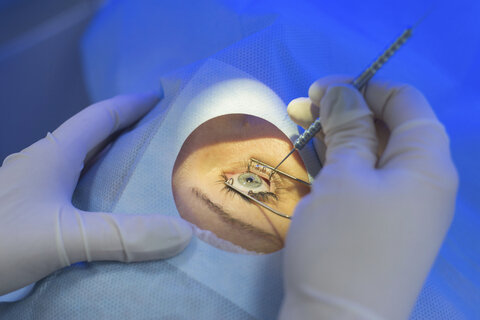Traditionally glaucoma surgery was indicated in patients that had advanced staged disease meaning that a large percentage of the cells of the optic nerve were damaged irreversibly, causing loss of vision and visual field defects (tunnel vision) due to a lack of response to medical treatments with eye drops or laser therapy, which can decrease the intraocular pressure (IOP). Another indication for surgery was in patients with poor medication compliance, or who used the drops less frequently, or presented with toxicity or intolerance to the eye drops. The goal of the surgeries was to prevent progression of the disease, but they were associated with a high number of complications.
A new option for patients with mild to moderate stage glaucoma with co-existing cataracts is minimally invasive glaucoma surgery (MIGS) which has a higher safety profile and faster recovery. Typically, MIGS offers long lasting IOP control and has the advantage of decreasing the use of eye drops. These procedures are now covered by most health insurance.
Minimally invasive glaucoma surgery (MIGS) which has a higher safety profile and faster recovery.

Five things to know about MIGS:
DID YOU KNOW?
1) MIGS means minimally invasive glaucoma surgery?
2) MIGS is a new option treatment for patients with mild to moderate glaucoma with co-existing cataract?
3) Advantages for MIGS are fast recovery and the possibility to obtain a long-lasting effect of lowering the IOP with less or no eye drops required.
4) MIGS has a higher safety profile than traditionally glaucoma surgery.
5) A discussion of MIGS includes implants, devices, and surgical techniques.







